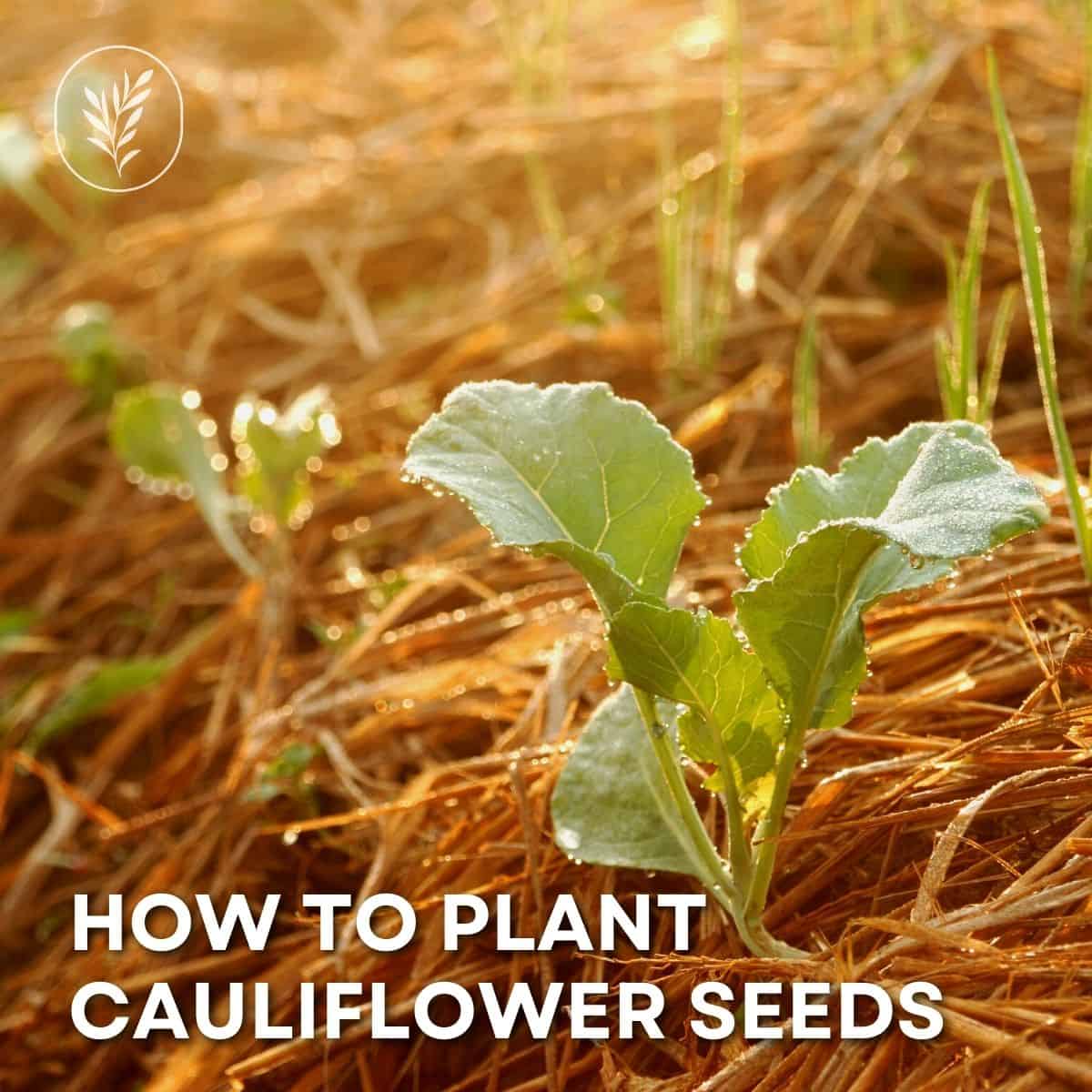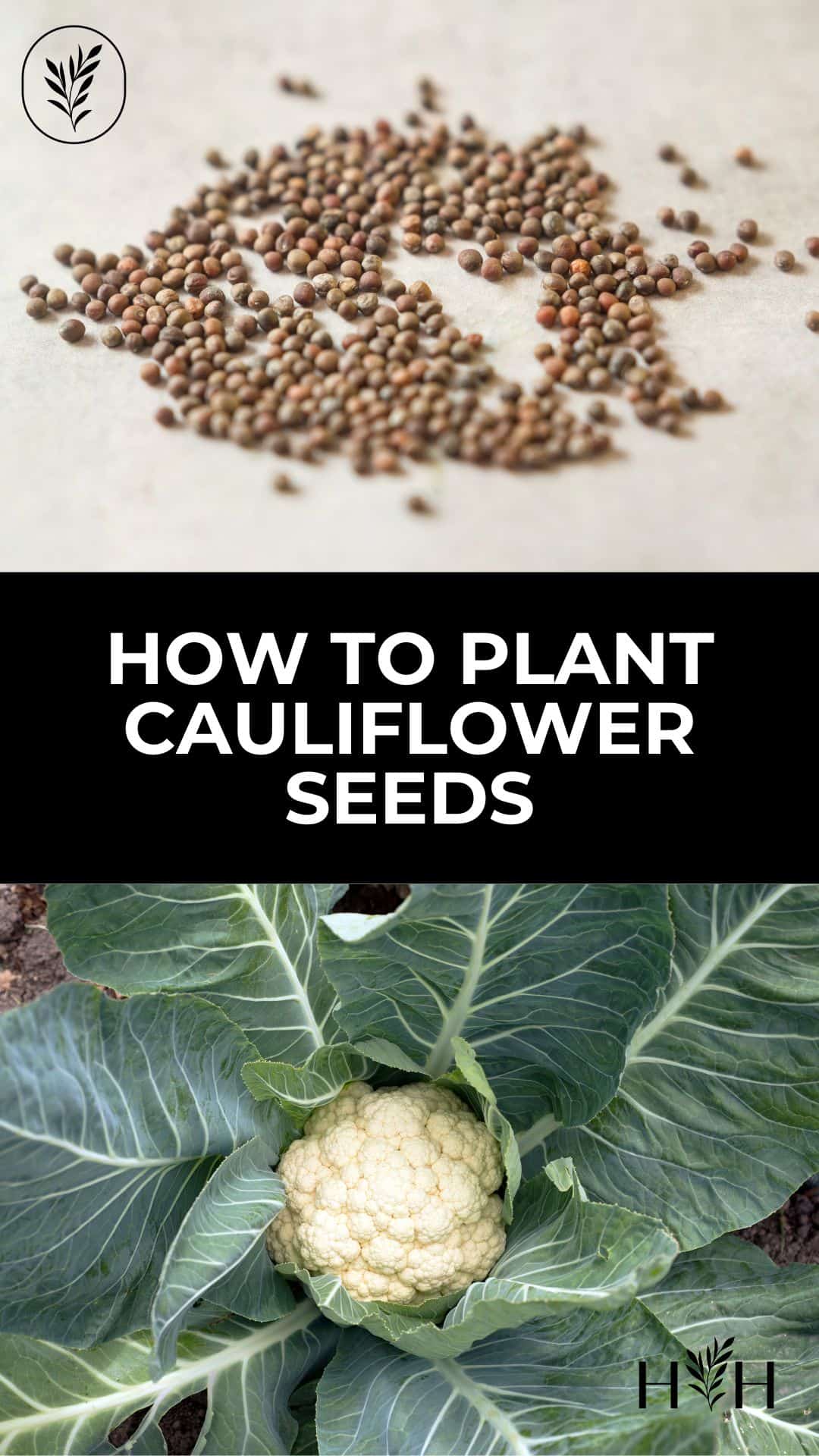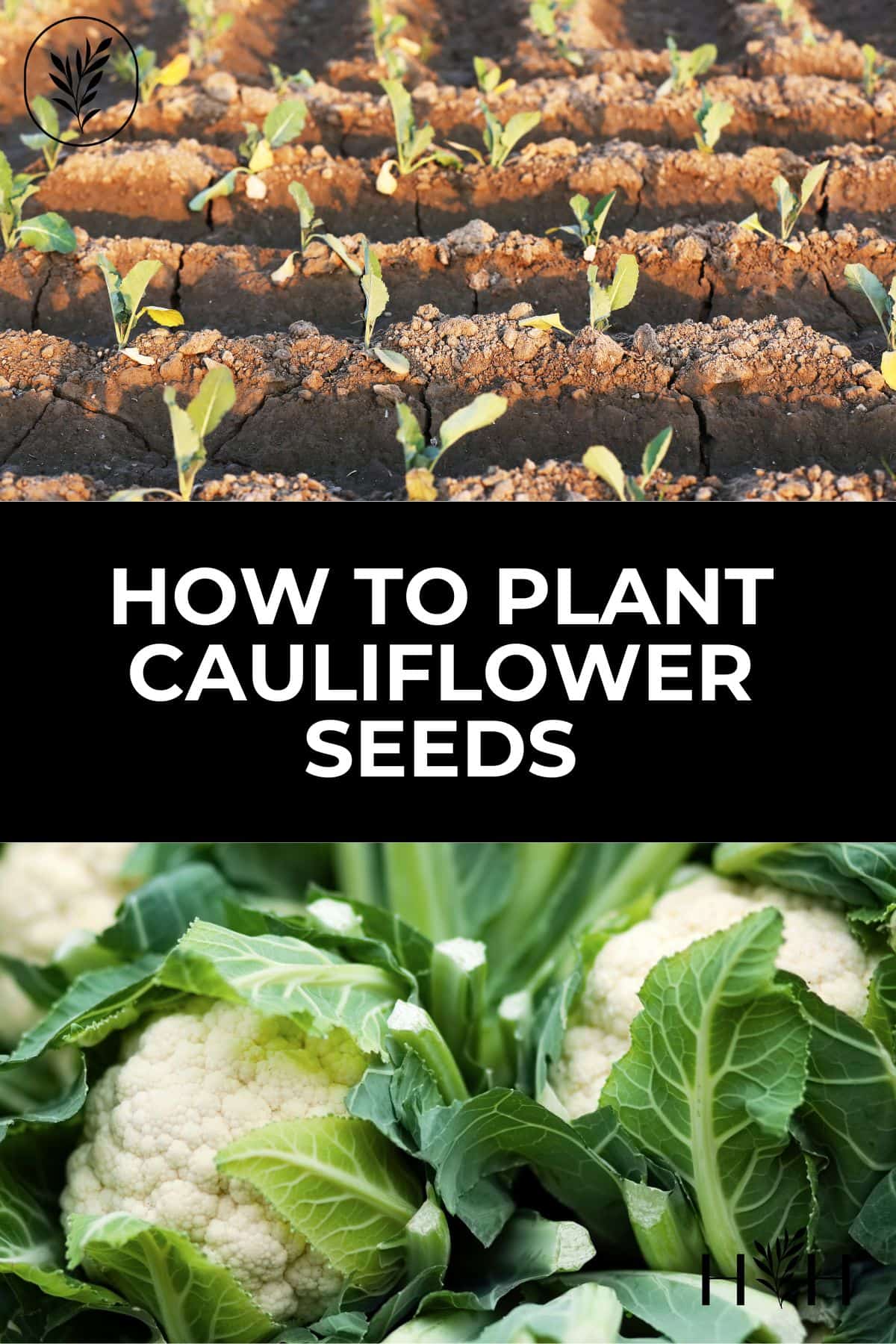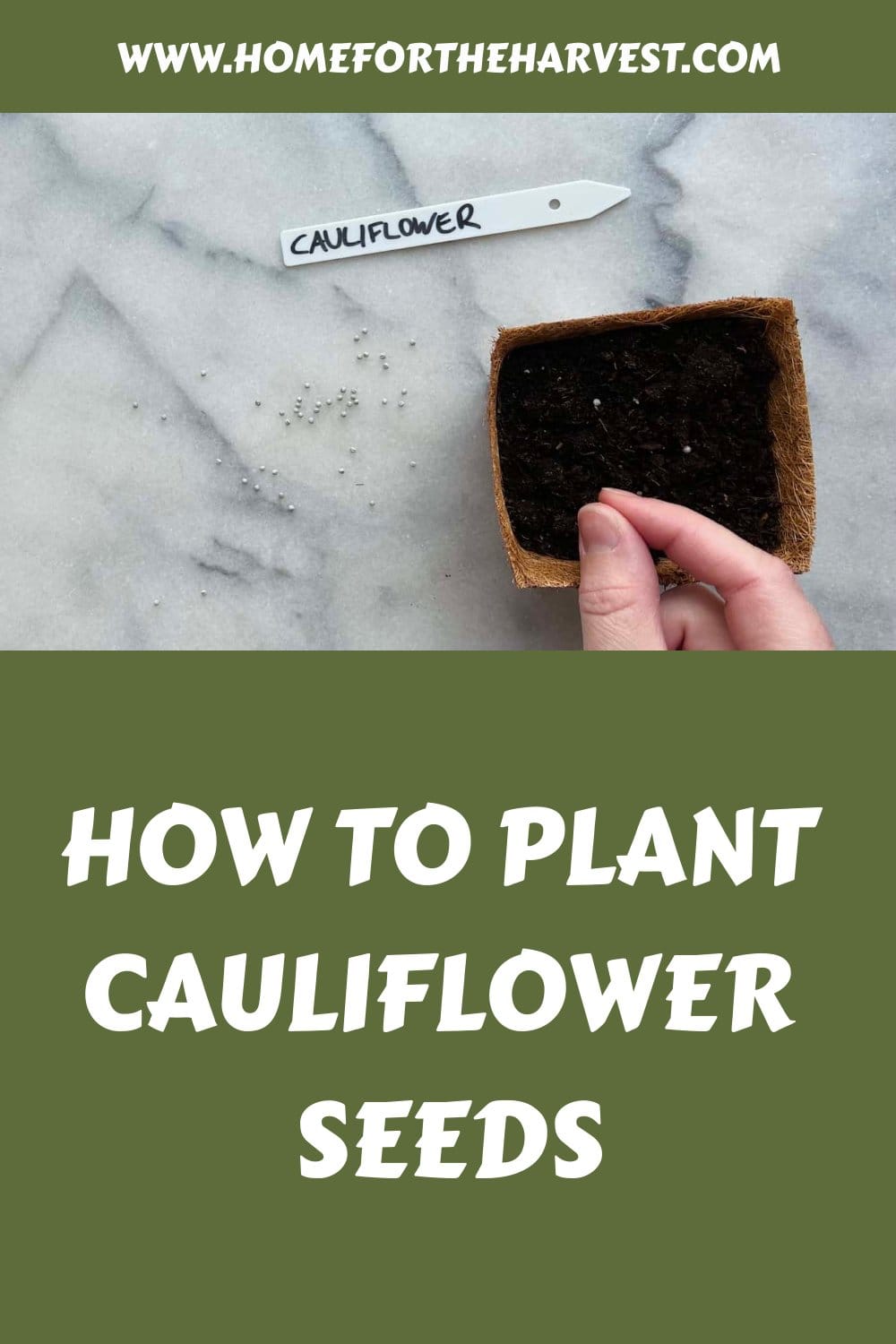No matter your level of gardening expertise, planting cauliflower seeds both indoors and outdoors requires special attention to yield the best results. In this blog post we will explore how to plant cauliflower seeds, as well as tips on caring for them after planting and common problems that may arise.
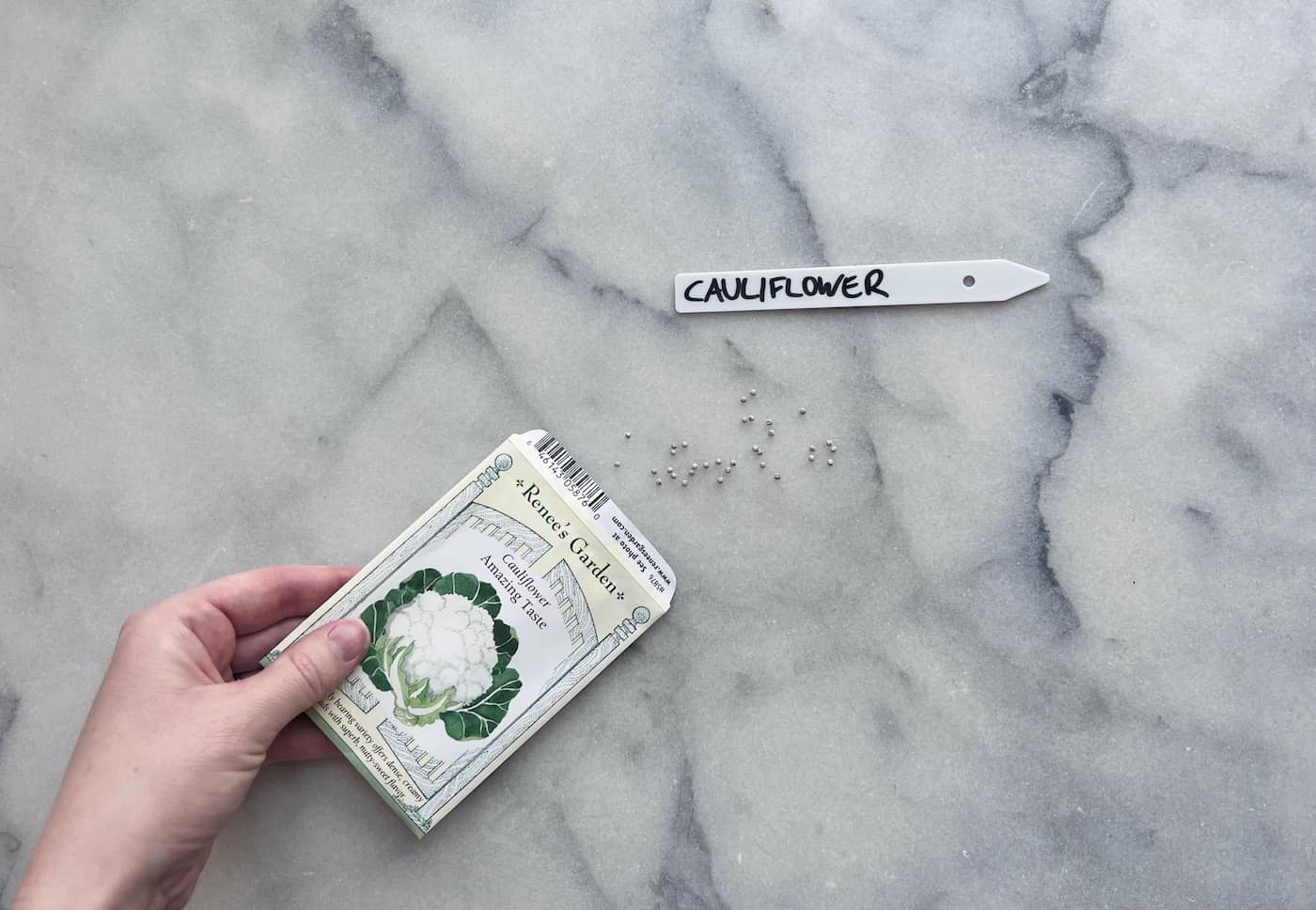
The basics of how to plant cauliflower seeds
Planting cauliflower seeds is a great way to grow some of your own produce. When planting cauliflower seeds, you should follow several important steps to ensure success. Cauliflower is considered a cool-season crop and prefers the cooler weather of shoulder season to the heat of summer.
Cauliflower seeds can be sown indoors in seed starting trays for later transplanting out into the garden, or the seeds can be sown directly in outdoor soil. Cauliflower is most commonly started indoors as it transplants easily, but the seeds can go straight in the soil outside too.
If planting indoors, use small containers or seed starting trays that drain out excess water easily. Fill each container with moist potting soil, leaving about a half inch of room. Sow the seeds in small holes about 1/4 inch deep. Use 2-3 seeds per hole if you’ve got lots (and thin out the weakest seedlings later). Cover the seeds with a bit of soil and water well.
Place your pots near a window where they will receive plenty of sunlight, but not too much direct heat from outside temperatures. Water regularly, using lukewarm water if possible; this will help keep your plants hydrated without shocking them with cold water.
The optimal soil temperature for cauliflower seed germination is in the range of about 45°-85°F (7°-30°C). Indoors, you can put the seed-starting tray on a seedling mat or on a heated floor. Outdoors, you’ve got less control, but the cooler temperatures make the seedlings less prone to common fungal diseases.
How to plant cauliflower seeds indoors
Planting cauliflower seeds indoors is a great option for an early start on your garden. Depending on the climate and growing season, cauliflower can be planted indoors in either spring or fall. The key to successful indoor seed planting is providing the right environment for germination and growth.
Before planting, you’ll need to select a container with drainage holes at the bottom and fill it with clean potting mix that’s rich in organic matter. Make sure all your supplies and tools are clean to minimize the chances of spreading disease.
Fill your containers with moist potting mix. Poke small 1/4 inch deep holes in each container. Plant 2-3 seeds in the hole and cover with more moist potting mix. Gently press down on this layer so that all seeds are securely covered and will have direct contact with moisture when watered again later on.
Water the seeds after planting. Place containers near a window where they can receive ample light throughout each day—ideally 8-10 hours per day—and keep temperatures between 65-75 degrees Fahrenheit during germination time (7-14 days). Cauliflower seeds usually sprout within about one week indoors.
Most brassica plants like cauliflower grow best when the plants are at about 60°-65°F (16°-18°C). They don’t like overly hot weather. You may also consider reducing the night temperature for your seedlings down to about 50°-55°F (10°-13°C) if fungal wilt has been a problem before.
Finally, when weather conditions allow, you may want to gradually acclimate plants grown indoors by bringing them outside during daytime hours. This helps prevent shock from sudden exposure to outdoor elements such as wind or rain while allowing time for the root system to adjust before being permanently transplanted directly into garden beds outdoors. It may also keep damping off fungus at bay.
When transplanting seedlings into their permanent location outside (about 4 weeks after sowing), dig holes twice as wide as the root ball of each seedling and fill them with compost mixed with a slow-release fertilizer before placing each one into their new home.
After planting, water regularly but not too heavily; aim for keeping moisture levels consistent rather than drenching every day or two. Finally, mulch around plants to help retain moisture during hot weather spells while also preventing weed growth from taking over your cauliflowers’ space.
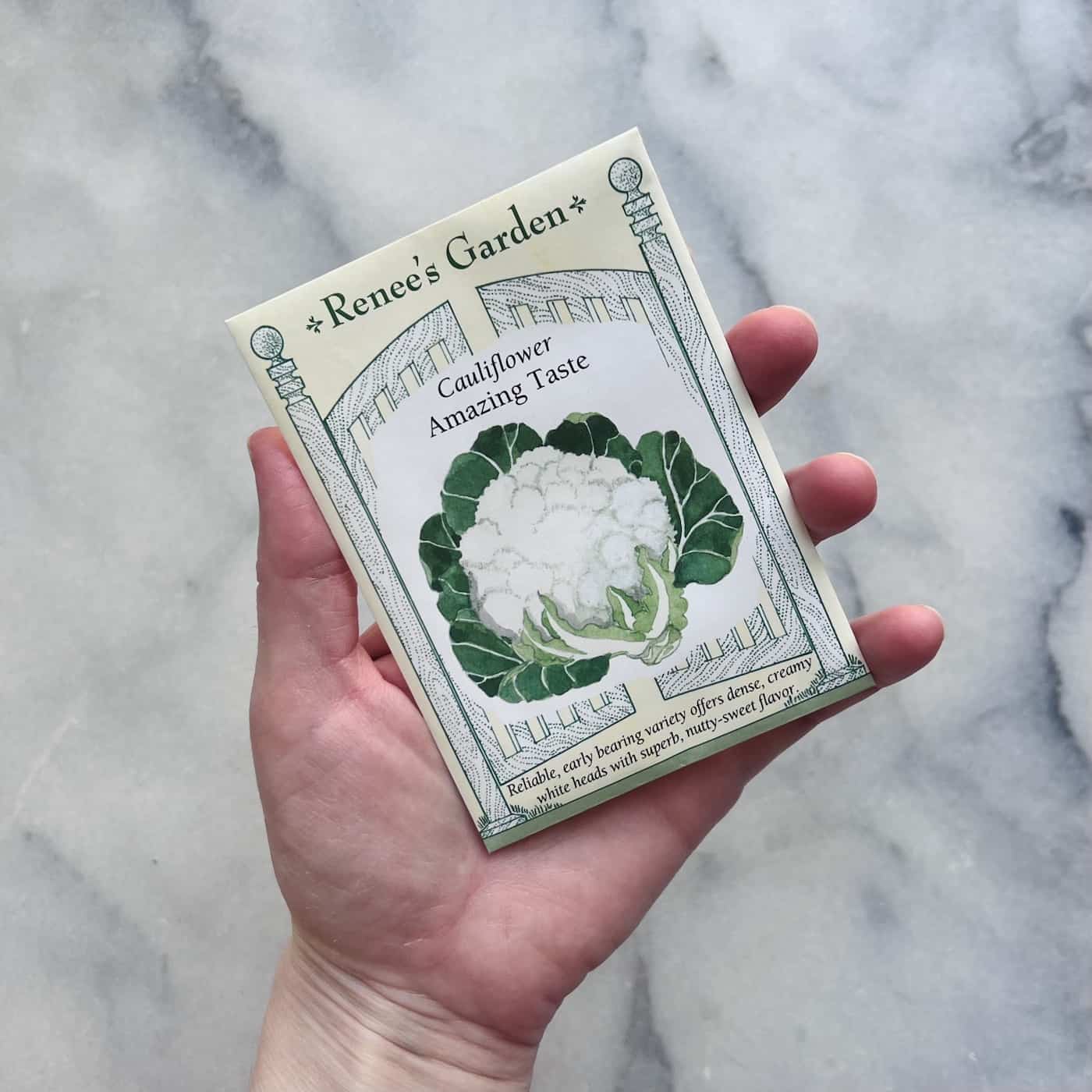
How to plant cauliflower seeds outdoors
Planting cauliflower seeds outdoors can be a great way to get your garden going. It’s important to remember that when planting cauliflower, you need to choose the right spot and prepare it properly.
Choose a sunny spot in your garden with well-draining soil. Cauliflower needs plenty of sunlight and good drainage to thrive, so make sure you pick an area where the soil won’t stay wet for long periods.
Prepare the soil by removing any weeds or debris, then add compost or aged manure if nutrition is needed. The ideal pH level for growing cauliflower and most other veggies is between 6 and 7 (slightly acidic), so test your soil beforehand if possible.
Once the earth is ready, poke planting holes about a 1/4 inch deep. The holes should be 6-12 inches apart, while rows should be about 12 inches apart.
Water them gently but thoroughly after sowing and keep them moist until they germinate (usually within 10 days). Once they sprout up, thin out any overcrowded seedlings as necessary – this will help give each plant enough room to grow without competing for resources like light and water.
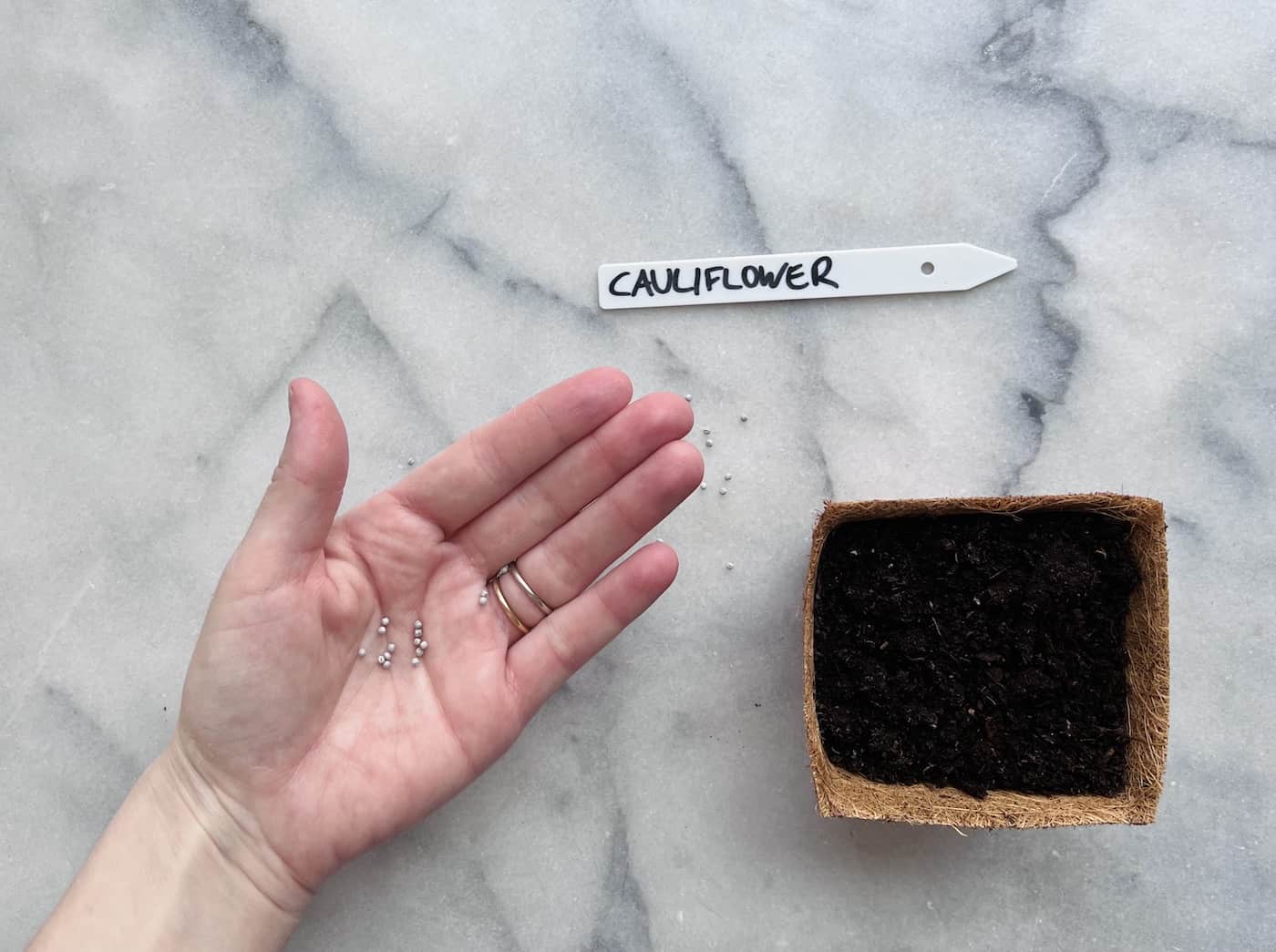
Care for cauliflower seeds after planting
Once your cauliflower seeds are planted, proper care is essential for them to thrive. Caring for your cauliflower seeds after planting will ensure that they grow into healthy plants and produce a delicious crop.
Watering cauliflower seedlings
Watering the area around seedlings should be done consistently, taking care to not over-saturate or leave them too dry. Cauliflower needs plenty of moisture in order to thrive, so water deeply once a week or more if necessary. The soil should be moist like a wrung-out sponge, but not so wet that it is muddy or there are puddles.
Fertilizing young cauliflower plants
Every two weeks during the growing season, fertilize your cauliflower with an all-purpose fertilizer to ensure it receives essential nutrients for optimal growth and avoid potential nutrient deficiencies. This will help keep your plants healthy and provide essential nutrients needed for optimal growth. Avoid applying too much fertilizer, as this could cause nutrient deficiencies and impede growth, thus reducing the yield.
Weeding around cauliflower seedlings
Remove any weeds from around the base of each plant by hand or use an organic weed killer such as vinegar or boiling water if necessary. Weeds compete with young seedlings for nutrients and light so removing them promptly is key in ensuring healthy growth rates in young plants.
Pest control for brassicas
Monitor closely for pests such as aphids, caterpillars, whiteflies, etc., which may be attracted by tender new foliage on young plants. Use organic methods such as insecticidal soap sprays or neem oil if needed but avoid using chemical pesticides whenever possible due to their potential toxicity levels both to humans and beneficial insects like bees & butterflies who play an important role in pollinating our food crops.
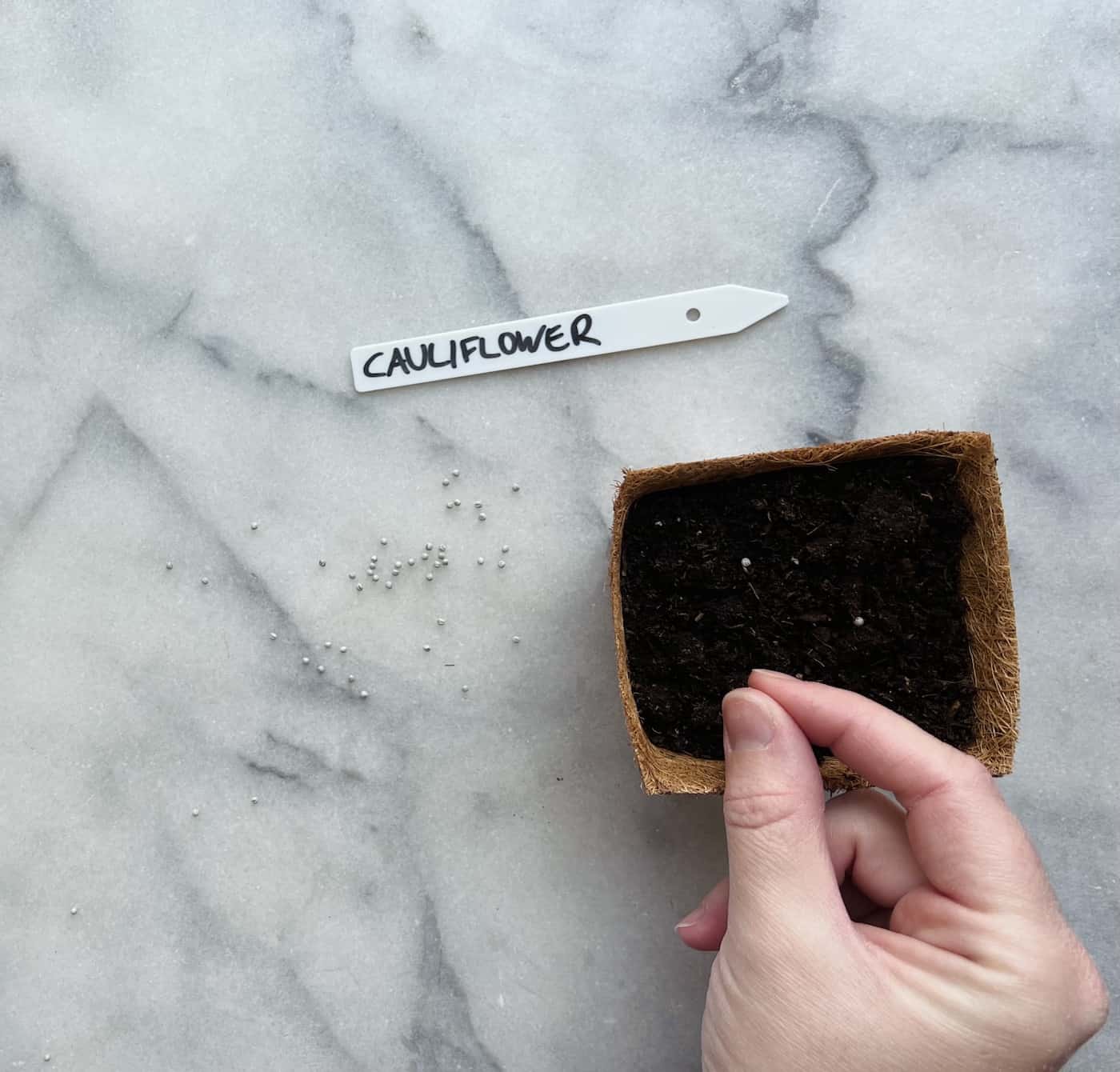
Common problems when growing cauliflower from seed
Growing cauliflower from seed can be tricky, especially for beginner gardeners. While it’s not the most difficult of cole crops to grow, some common problems can arise if you don’t take certain precautions.
Heads do not form
Cauliflower is a cool-season crop and should be started indoors 6-8 weeks before the last frost date in your area. If planted too late or too early, heads may form prematurely or fail to form at all. Additionally, young plants need protection from both wind and sun when first transplanted outdoors.
Timing your harvest
Harvesting cauliflower heads is an art unto itself; wait too long and they will become woody and bitter but harvest them too soon and you won’t get full-sized heads with good flavor. To ensure success look for firm white curds on large plants with well-developed leaves which indicates that the head has reached its prime size and quality.
Pests & disease
The cabbage family (which includes cauliflower) is prone to pests such as cabbage loopers, flea beetles, cutworms, slugs, and snails, as well as diseases like black rot or club root, so keep an eye out for these potential issues while growing your crop. Always use supplies from trusted sources and keep your tools clean. Organic fertilizer can help plant health, while row covers protect them from pesky insects.
Also, remember that cauliflower is a cool-season crop, not a warm-season crop (see more about the differences). The seeds like a warm room temperature to germinate, but they should be moved to a slightly cooler spot as soon as they’ve sprouted. These young seedlings do not like warm, stagnant indoor air, and can easily topple over or experience wilt as a result of fungal growth.
Finally, remember to rotate your crops every year. This helps reduce soil-borne diseases by preventing pathogens from building up in one spot over time and gives different varieties of vegetable access to nutrients they may have missed out on previously.
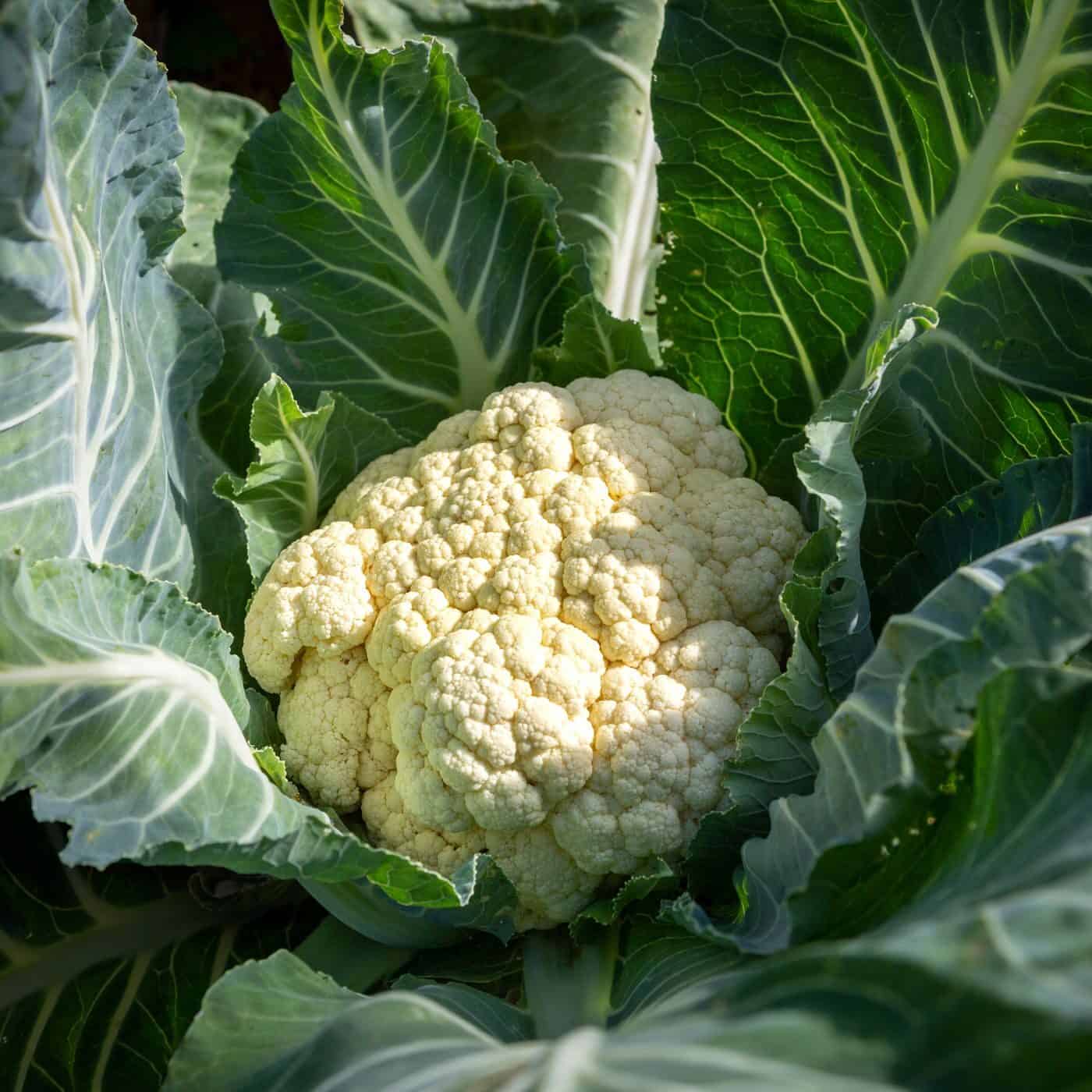
FAQs about how to plant cauliflower seeds
How do you plant cauliflower seeds?
To plant cauliflower seeds, begin by preparing the soil in a sunny location. Use a spade to loosen the top 12 inches of soil and mix in compost or aged manure for nutrients. Sow seeds 1/2 inch deep and 4-6 inches apart in 24-36 inches apart rows.
Keep the soil moist but not soggy until seedlings emerge, then water regularly as needed throughout their growth period. Once plants reach 6-8” tall, thin them out so they have room to grow; leave only 8-10″ between each plant.
Do cauliflower seeds need to be soaked before planting?
Soaking the seeds is unnecessary for a cauliflower plant’s successful germination and growth. However, it can help speed up the process as soaking helps soften the seed coat, allowing water to penetrate more easily and triggering germination faster than unsoaked seeds. If you have time, soak them for a few hours before placing them in moist soil.
What is the best way to plant cauliflower?
For optimal growth, cauliflower should be planted in a sunny spot with good drainage and soil enriched with compost and balanced fertilizer; 12 inches between plants allows for proper air circulation.
Before planting, enrich the soil with compost and a balanced fertilizer. Plant seeds or seedlings 12 inches apart to allow for adequate air circulation between plants. Keep the soil consistently moist but not soggy by providing 1 inch of water per week during dry spells.
Before you go…
With proper planting, care, and maintenance of cauliflower seeds, you can enjoy a bountiful harvest in the near future. Follow the instructions outlined here, and growing healthy and productive plants from seed should be no problem at all.
Resources
- Vegetable varieties: Top recommended types for your home garden
- Partial sun vegetables to grow
- Best plants for a balcony vegetable garden
- Types of gardens best for growing vegetables
References
- Crozier, A. A. (2022). The Cauliflower. DigiCat.
- Albert, S. (2008). The Kitchen Garden Grower’s Guide: A Practical Vegetable and Herb Garden Encyclopedia. CreateSpace Independent Publishing Platform.
- Dowding, C. (2022). No Dig: Nurture Your Soil to Grow Better Veg with Less Effort. Penguin.
Need more info?
Are you interested in learning more about how to plant cauliflower seeds? Here are our best articles about it!


